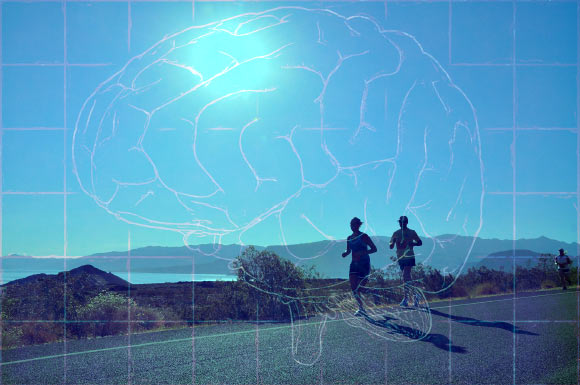New research published in the journal Frontiers in Human Neuroscience reveals that endurance runners’ brains have greater functional connectivity — or connections between distinct brain regions — than the brains of more sedentary individuals.

Running may affect the structure and function of the brain in ways similar to complex tasks like playing a musical instrument. Image credit: Pete Linforth / Skeeze.
A team of researchers at the University of Arizona compared the MRI scans of a group of male cross country runners to the scans of young adult males who hadn’t engaged in any kind of organized athletic activity for at least a year.
The participants were roughly the same age — 18 to 25 — with comparable body mass index and educational levels.
The scans measured resting state functional connectivity, or what goes on in the brain while participants are awake but at rest, not engaging in any specific task.
“We compared resting-state functional connectivity in a sample of adult male collegiate distance runners (n = 11; age = 21.3) and a group of healthy age-matched non-athlete male controls (n = 11; age = 20.6), to test the hypothesis that expertise in sustained aerobic motor behaviors affects resting state functional connectivity in young adults,” the authors explained.
The runners showed greater functional connectivity within several areas of the brain, including the frontal cortex, which is important for cognitive functions such as planning, decision-making and the ability to switch attention between tasks.
“Our results show, for the first time, clear differences in resting state functional connectivity between expert endurance athletes and healthy age-matched non-athletes,” the researches said.
“These differences may arise in response to the cognitive demands of long distance running combined with aerobic exercise.”
Previous studies have shown that activities that require fine motor control, such as playing a musical instrument, or that require high levels of hand-eye coordination, such as playing golf, can alter brain structure and function.
However, fewer studies have looked at the effects of more repetitive athletic activities that don’t require as much precise motor control — such as running.
The team’s findings suggest that these types of activities could have a similar effect.
“These activities that people consider repetitive actually involve many complex cognitive functions — like planning and decision-making — that may have effects on the brain,” said lead author Dr. David Raichlen, an associate professor of anthropology at the University of Arizona.
“Since functional connectivity often appears to be altered in aging adults, and particularly in those with Alzheimer’s or other neurodegenerative diseases, it’s an important measure to consider,” added senior author University of Arizona psychology professor Gene Alexander.
“And what researchers learn from the brains of young adults could have implications for the possible prevention of age-related cognitive decline later on.”
_____
David A. Raichlen et al. Differences in Resting State Functional Connectivity between Young Adult Endurance Athletes and Healthy Controls. Front. Hum. Neurosci, published online November 29, 2016; doi: 10.3389/fnhum.2016.00610







